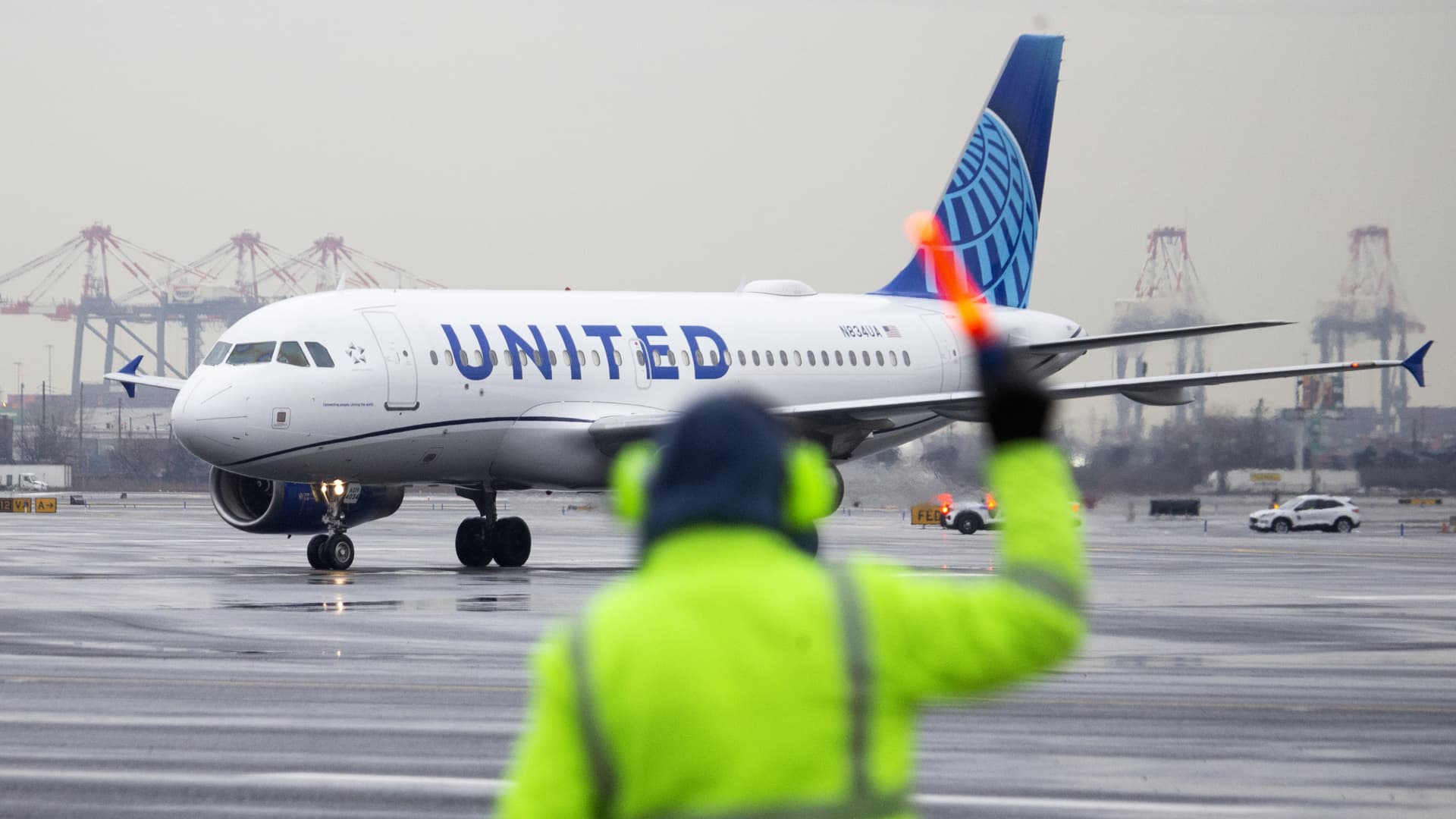United Airlines‘ fourth-quarter profit and outlook for early 2023 topped Wall Street estimates thanks to strong travel demand and high fares.
Consumers’ appetite for air travel and willingness to pay higher fares has helped airlines return to profitability despite higher costs for fuel, labor and other expenses tied to ramping their networks back up. Meanwhile, aircraft delivery delays and training backlogs have constrained airlines’ growth, keeping fares high.
United reported an $843 million profit for the last three months of 2022, a 31% increase compared with three years earlier, on revenue of $12.4 billion. That revenue was almost 14% higher than the same period in 2019, before the pandemic, despite flying 9% less, helping it post a profit despite a 21% increase in unit costs from three years earlier.
United shares were down more than 2% on Wednesday morning.
The quarterly update is another sign of a strong year-end for airlines, despite severe winter storms and disruptions during the popular holiday travel period.
A grounds crew member directs an United Airlines airplane to a gate at Terminal A at Newark Liberty International Airport (EWR) in Newark, New Jersey, US, on Thursday, Jan. 12, 2023.
Aristide Economopoulos | Bloomberg | Getty Images
Last week, Delta Air Lines‘ profit and revenue surpassed Wall Street’s expectations though higher costs, partly due to an expected pilot labor deal, weighed on its first-quarter profit forecast. Also last week, American Airlines, which reports on Jan. 26, hiked its profit and sales forecast for the fourth quarter.
Here’s how United performed in the fourth quarter compared with what Wall Street expected, based on average estimates compiled by Refinitiv:
- Adjusted earnings per share: $2.46 versus an expected $2.10
- Total revenue: $12.4 billion versus expected $12.2 billion
For the first three months of 2023, United expects to generate revenue 50% higher than the same period of 2022. It expects first-quarter earnings per share to be between 50 cents and $1, above analyst consensus of 25 cents, according to Refinitiv.
United expects to expand flying 20% in the first quarter from a year ago, it said in a filing.
It forecast capacity growth in the high teens for the full year over 2022. It forecast unit revenues, or revenue per available seat mile, for the full year to come in flat compared with 2022, a sign that air fares’ sharp rise this year could continue to abate as airlines add back more flights.
United also said in an investor presentation that staffing issues, plane shortages and outdated tech would restrict industry capacity this year.
As the airline industry confronts a Covid-induced labor shortage, United and others are hoping to boost pilot and crew counts into the next fiscal year. The company on Tuesday noted the debut of its Calibrate apprenticeship program, which it launched in November, and the United Aviate Academy which started in early 2022. The airline also on Tuesday said it opened a renovated and expanded flight attendant training facility in Houston.
United hasn’t yet reached a new labor agreement with its pilots. Delta and its pilots’ union have reached a preliminary agreement for a contract that includes big raises, but pilots haven’t yet voted on it.
CEO Scott Kirby told CNBC’s “Fast Money” that the airline’s pilots union is working on electing a new leader after its last head resigned, which should be finalized later this month. Once the new leader has been selected, Kirby expects negotiations to resume, which he estimated to be by Feb. 7.
He said an agreement on a pilot contract “ought to be done pretty quickly once we get back to the table.”
United said in its investor presentation that it expects new contracts with pilots, flight attendants, technicians and airport employees to keep its non-fuel costs steady over 2022.
Kirby also said the industry’s supply constraints reflect a broader infrastructural problem, displayed in the recent Federal Aviation Administration system outage. He said that the FAA’s expansion into space and drones has strained the resources it would typically use to support flight infrastructure.
“They’ve had to rob Peter to pay Paul,” Kirby said. “They just don’t have enough resources.”
Kirby said he is in Washington, D.C., twice a month, lobbying for more resources.

